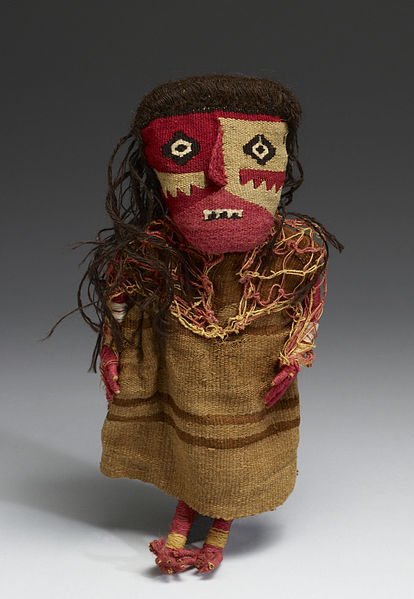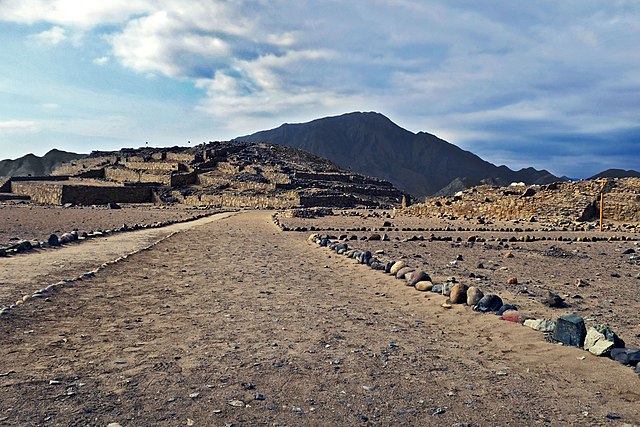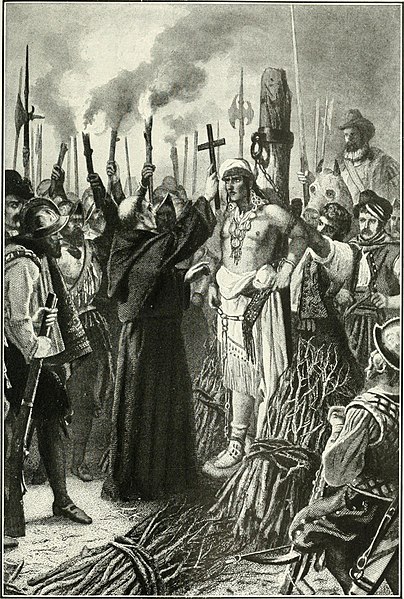Peruvian art has its origin in the Andean civilizations. These civilizations rose in the territory of modern Peru before the arrival of the Spanish.
Nazca mantle from Paracas Necropolis, 1-100 CE This is a "double fish" (probably sharks) design, Brooklyn Museum
Moche Nariguera depicting the Decapitator (Ayapec, Ai Apaec), gold with turquoise and chrysocolla inlays, c. 200–850 CE, Museo Oro del Peru, Lima
A view of Machu Picchu, Incan architecture, c. 1450 CE
Textile doll (11th century), Chancay culture, found near Lima, Walters Art Museum. Of their small size, dolls are frequently found in ancient Peruvian tombs.
Peru, officially the Republic of Peru, is a country in western South America. It is bordered in the north by Ecuador and Colombia, in the east by Brazil, in the southeast by Bolivia, in the south by Chile, and in the south and west by the Pacific Ocean. Peru is a megadiverse country with habitats ranging from the arid plains of the Pacific coastal region in the west to the peaks of the Andes mountains extending from the north to the southeast of the country to the tropical Amazon basin rainforest in the east with the Amazon River. Peru has a population of over 32 million, and its capital and largest city is Lima. At 1,285,216 km2, Peru is the 19th largest country in the world, and the third largest in South America.
Remains of a Caral/Norte Chico pyramid in the arid Supe Valley
Moche earrings depicting warriors, made of turquoise and gold (1–800 CE)
The citadel of Machu Picchu, an iconic symbol of pre-Columbian Peru
One of the main events in the conquest of Peru was the death of Atahualpa, the last Sapa Inca, executed by the Spaniards on 29 August 1533








